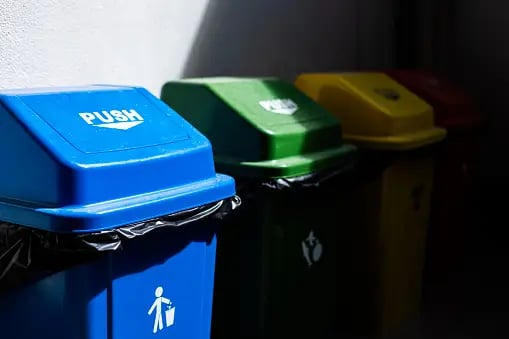Based on an interview with Alex Betson, LDC (the private equity arm of Lloyds Banking Group).
From Differentiator to Baseline
In the past, a strong sustainability story was a competitive advantage in procurement. Today, it’s simply the ticket to play.
As Alex Bexon from LDC explained in our conversation:
“What used to be a competitive advantage for our companies is now just a right to compete. The bar has been raised significantly in tender processes.”
This shift has profound implications for small and medium-sized enterprises (SMEs), especially those serving public sector clients and large corporates. Procurement processes are increasingly using sustainability as a gatekeeping factor. If you don’t meet the standard, you don’t make the shortlist—no matter how competitive your price or product may be.
The Procurement Landscape in 2025
Procurement teams are under pressure to deliver not only value for money but also measurable ESG impact. According to PwC’s 2024 CEO Survey, 73% of CEOs say they are embedding sustainability into procurement to manage risk and meet stakeholder expectations.
In the UK public sector, sustainability is now a contractual requirement. For example:
- The UK Government’s “PPN 06/21” requires suppliers bidding for major contracts to publish a carbon reduction plan.
- NHS Supply Chain now includes sustainability scoring in tenders, with emissions reporting mandatory for suppliers from 2024.
- Large corporates like Unilever and BT publicly state that suppliers must meet ESG criteria to remain on their panels.
For SMEs, this means sustainability isn’t a “nice-to-have.” It’s a survival factor.
How the Bar Has Been Raised
Alex noted that the last 12 months have been transformative:
- Depth of Reporting – Buyers no longer accept surface-level claims. They expect carbon baselines, reduction targets, and progress reporting.
- Breadth of Scope – It’s not just about emissions. Procurement frameworks now consider diversity, modern slavery, and circular economy practices.
- Continuous Proof – One-off audits aren’t enough. Suppliers are expected to demonstrate year-on-year improvement.
A manufacturer that once won tenders by showing ISO 14001 certification now needs to provide full lifecycle carbon data, a science-based target, and evidence of delivery.
The SME Challenge
For SMEs, this is a double-edged sword. On one hand, sustainability requirements create new barriers to entry. On the other, they level the playing field against larger incumbents who may be slower to adapt.
Research from the Federation of Small Businesses (2024) found that 41% of SMEs believe sustainability requirements in procurement are now their biggest barrier to winning contracts. Yet, those that invest in ESG reporting capability are securing access to larger clients and more resilient revenue streams.
Alex put it simply:
“You’ve got to get a lot more advanced to get the same cut through with your customers on sustainability.”
Case Example: Sustainability as a Tender Decider
One LDC-backed SME in the facilities management sector recently faced this reality. Competing for a multimillion-pound public sector contract, the deciding factor wasn’t price—it was their sustainability credentials. Because they had invested early in carbon reporting and emissions reduction, they secured the deal. Competitors without the same maturity didn’t even make it past the first stage.
This isn’t an isolated case. According to EY, 68% of procurement leaders say sustainability criteria now influence over half of their sourcing decisions.
How to Compete in the New Era of Procurement
SMEs looking to stay competitive need to focus on three key actions:
- Build Robust Reporting Capability
Invest in platforms or partners that make carbon and ESG reporting reliable, repeatable, and audit-ready.
- Embed Sustainability Into Strategy
Procurement teams want to see sustainability integrated into operations, not bolted on. From supply chains to product design, it should be clear how ESG shapes decisions.
- Communicate Progress Clearly
Data alone isn’t enough. Translate metrics into clear, compelling narratives for procurement teams who need confidence in your delivery.
The License to Compete
The procurement bar has been raised. Sustainability has shifted from being a differentiator to a license to compete. For SMEs, this creates both a challenge and an opportunity. Those who fail to adapt risk exclusion. Those who embrace sustainability as part of their core proposition unlock access to new markets, customers, and long-term growth.
Alex summed it up best:
“Sustainability is no longer optional in procurement. It’s fundamental to competing in today’s market.”
See how Rio AI helps SMEs meet procurement sustainability requirements, win tenders, and build resilience. Book a demo today.










